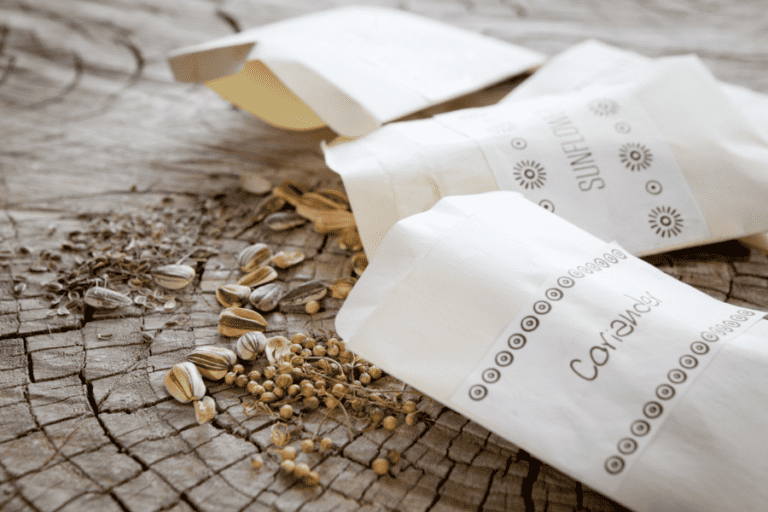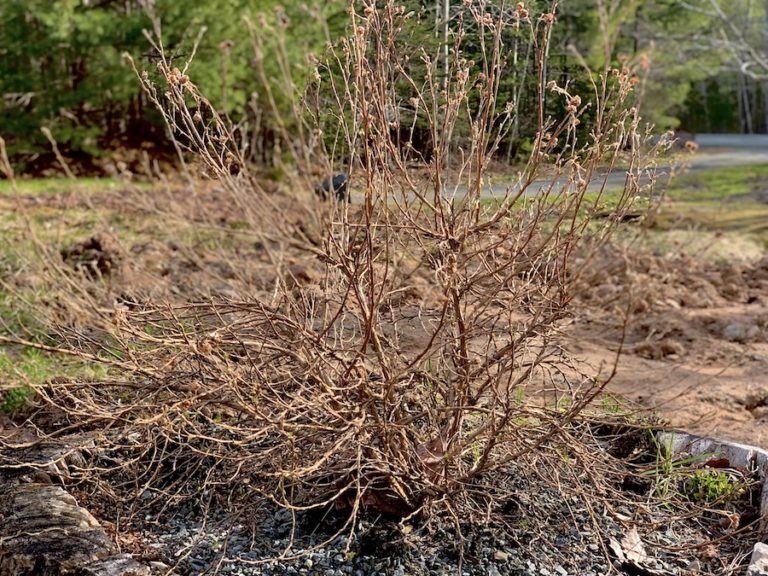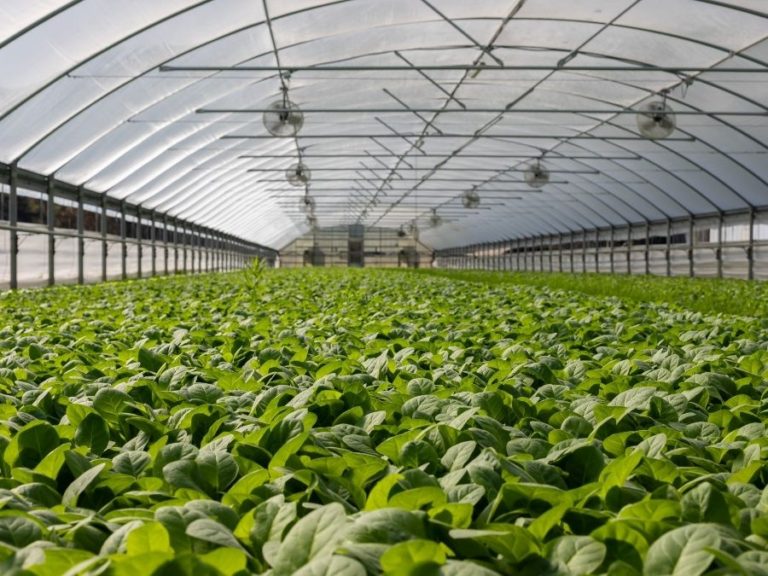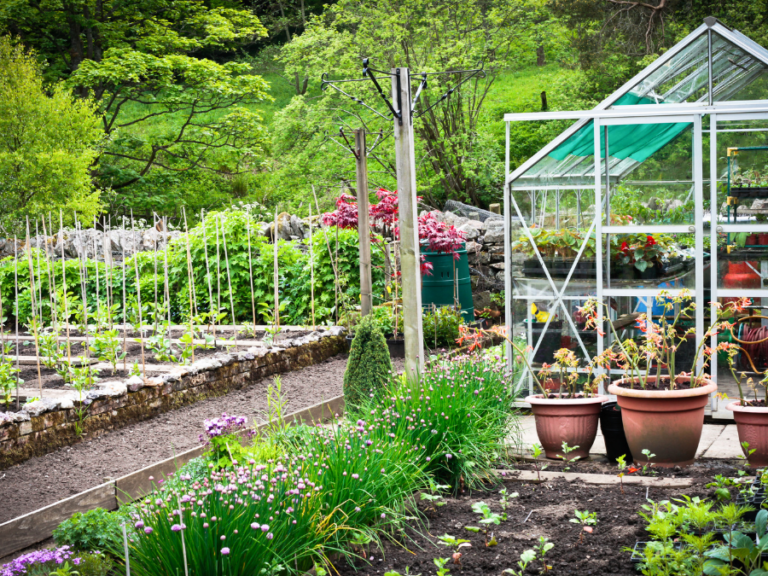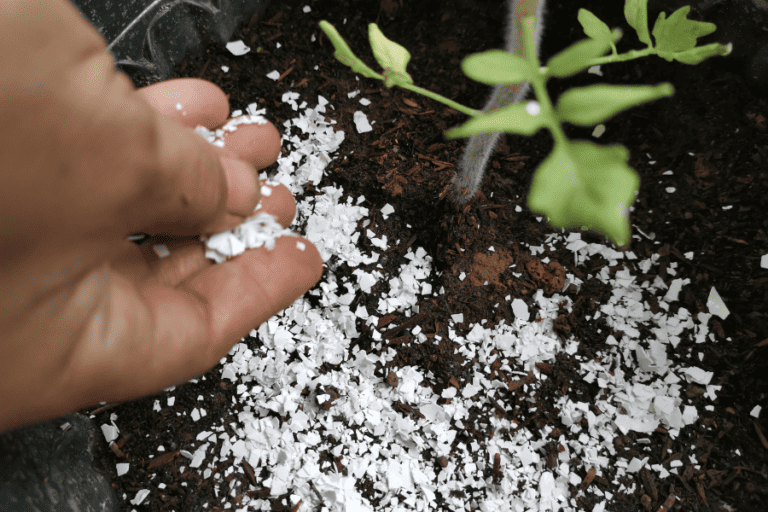Can Potting Soil Be Used Instead Of Gardening Soil?
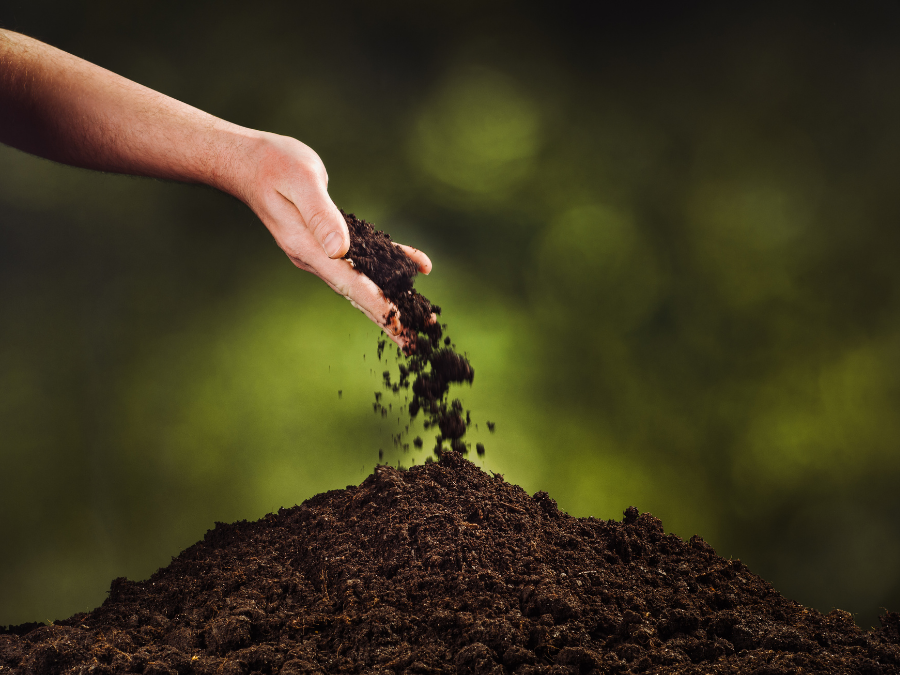
So you are ready to start growing your own vegetables in your backyard, but the only issue is that your plants just are not sprouting. This might leave you thinking that you don’t have a green thumb. Don’t let this discourage you. It’s not you, it’s your soil!
Can potting soil be used instead of gardening soil? While potting soil can be used in your garden, it should not be your first choice as it lacks the vital nutrients needed to successfully grow your vegetables. In fact, potting soil does not actually contain soil. Rather, it is made up of other organic materials such as bark and peat moss.
Many beginner gardeners assume that all soils are the same and will often overlook soil when planting vegetables. As we’ll find out in this article, that old bag of potting soil you’ve been using for your ivy and spider plants will not do the trick for your vegetable gardens.
Let’s explore the difference between potting soil and garden soil and how knowing the distinction between the two can lead to a robust and plentiful garden.
Disclaimer: This article includes affiliate links. If you click one of them, we may receive a small percentage of the sale at no extra cost to you. Thank you for your support!
Table Of Contents
- What Is Potting Soil?
- What Is Garden Soil?
- Potting Soil vs. Garden Soil
- Succulents And Other Plant Varieties
- Hydroponics
What Is Potting Soil?

Potting soil is a mixture of various organic materials that are commonly used in household plants. It is a light and fluffy blend formulated to prevent soil compaction, crushed roots and aid with drainage.
Whenever you purchase a house plant, it’s likely to be grown in potting soil. Note that some vegetable plant starters may also be in this soil. While it is not recommended for vegetable gardening, you can use potting soil to start seedlings.
It is a common product that you can find at any home improvement store and plant nursery. Potting soil is sold by cubic foot and is easy to buy in bulk.
What Is In Potting Soil?
Despite what its name might imply, potting soil does not contain any soil. Rather, it is made up of several components that can vary depending on the brand. The most common is a mixture of ground tree bark, peat moss, and perlite.
Consider potting soil as a growing medium rather than soil. All the ingredients in it are sterile to help kill off any potential microorganisms that could cause plant diseases. Thus making it great for indoor plants.
Since potting soil consists of inert materials, it does not contain many nutrients. However, it does provide stability to the plant and root system as they take shape. For this reason, you should consider fertilizing the soil periodically.
As previously mentioned, not all soils will contain the same ingredients. We recommend adding perlites to your potting soil if it does not already include them. These are small shards of volcanic glass that have been puffed by heat and resemble tiny white beads in the soil. Perlites are a great addition to your household plant’s soil as they help with drainage and aeration.
Why Use Potting Soil?
So, if potting soil contains little to no nutrients, you may be wondering why you should use it. The biggest advantage of using potting soil is its impeccable drainage. Every gardener knows that flooding is a nightmare for germination and juvenile plants.
Because of the components in potting soil, moisture in the soil is retained while still providing water drainage, thus allowing plants to thrive. This is particularly advantageous for plants in containers. Nevertheless, that doesn’t mean these conditions will always be ideal for the life of the plant. It is important to use fertilizers to help add nutrients to the soil.
What Is Garden Soil?
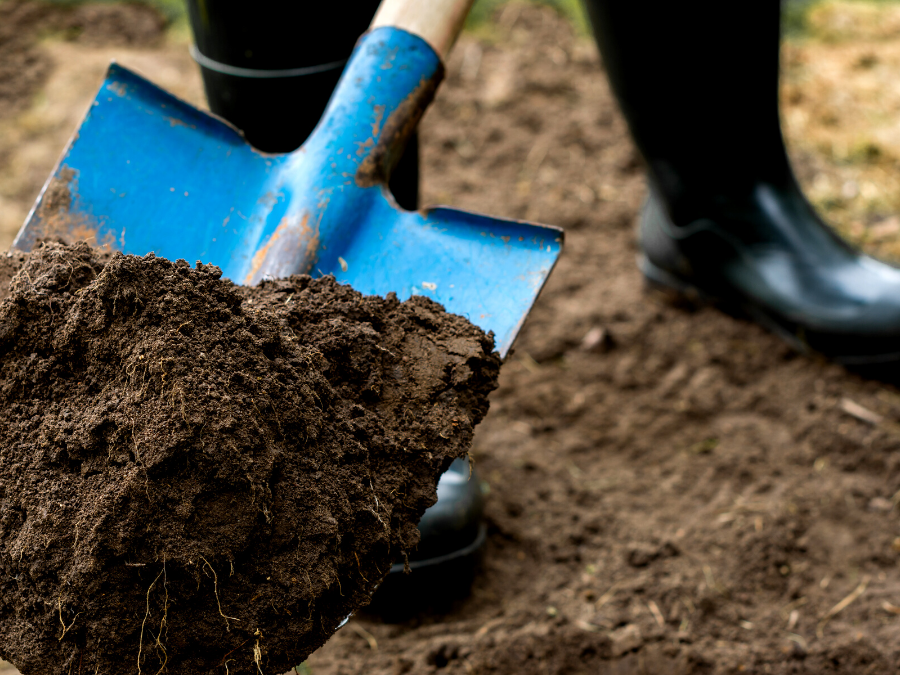
Garden soil contains mainly natural topsoil and organic materials such as manure and compost that add nutrients to your crops, making it an optimal choice for vegetable gardens. The biggest factor that sets garden soil apart from “potting soil” is that it actually contains soil.
There are various soil types, with the most common types being clay, silt, and sand. When these three soils are mixed in perfect proportion, they create loam. This is the ideal soil for outdoor gardening. It consists of sediment and dirt sourced from the great outdoors, making it the right blend for maximum crop growth.
What Is In Garden Soil?
If you are new to gardening, you may contemplate why you would buy a bag of soil rather than use dirt from your own backyard. Well, the answer is quite simple. Chances are, your native soil will not contain the necessary nutrients or structure needed to produce the best quality product. You may find your soil contains too much or too little of the three main soil types listed above: clay, silt, and sand. This, in turn, could hinder your garden’s success.
For example, some areas of the Southeastern United States might have soil that is moist and red in colour. This is due to the high levels of clay and iron found in the soil. Making it notoriously difficult to grow anything in it.
If you haven’t been having luck with your outdoor garden, chances are there’s a problem with your soil. Too much clay can impact your drainage, while too much sand can compact and crush your roots.
To find out more about the different types of soil, check our article “The Best Soil Types For A Vegetable Garden & Where To Buy.”
Why Use Garden Soil?
Consider garden soil as the foundation. To grow strong and healthy plant roots, you will need an optimal environment for them to grow. Unlike potting soil, garden soil is great for helping sustain the long-term growth of large-yielding plants such as your common vegetable crops, herbs, and flower gardens.
The trifecta of soils (also known as loam) offers the ideal growing conditions for outdoor gardens. That does not mean that your backyard soil is useless. Your native soil serves a great purpose when it comes to your garden. It is recommended to mix in garden soil with your topsoil to help balance the pH levels and add nutrients to your crops. For the best results, look for organic garden soil blends that are specifically formulated for the area you live in.
Potting Soil vs. Garden Soil
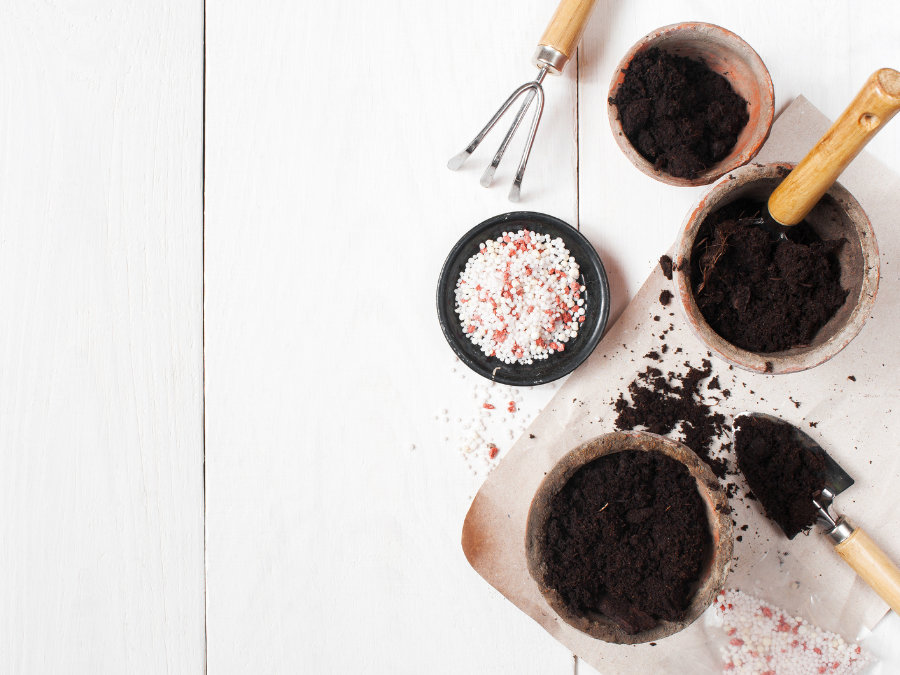
When planting your vegetable garden, you can use any growing medium as long as it contains vital nutrients needed for proper yield and harvest. And if it does not, they need to be added in manually.
Surprisingly, some gardeners have had success with potting soil. However, potting soil alone will not do the trick for vegetable gardens. If you decide to use this, it is imperative that it is fertilized properly, and you will need to keep an eye out for nutrient deficiencies. In addition, potting soil can dry out your garden quicker as it drains too well in this case.
If your plants are not thriving despite adding fertilizers and using loam soil, consider having your soil tested to ensure it’s up to speed. It could be the case that you have an issue with your soil’s pH levels that you were unaware of.
Potting Soil
Potting soil is better used in indoor plants and for seed germination. A common practice is to germinate seeds indoors, often in potting soil, then transfer them outdoors into garden soil. Sprouting seeds are fragile and can be crushed under the weight of outdoor soil, which is denser in nature. This is why potting soil is a suitable choice for seedlings.
Garden Soil
Garden soil is better suited for outdoor gardening and vegetable gardens. Gardens find the most success with this as it already contains the nutrients and soil balance needed for optimum growth. Another benefit to using garden soil is that it is naturally renewable. You can combine scraps from your compost to add additional nutrient density and texture to your soil.
Raised Beds
If you are growing your gardens in raised beds, you should use distinct raised garden soil. The reason you need a different soil is due to the fact that garden soil is meant to be mixed in with your natural soil and can be too dense for containers. Raised garden soil is lighter and consists of all the necessary materials found in natural soil, plus it contains additional fertilizer.
Succulents And Other Plant Varieties
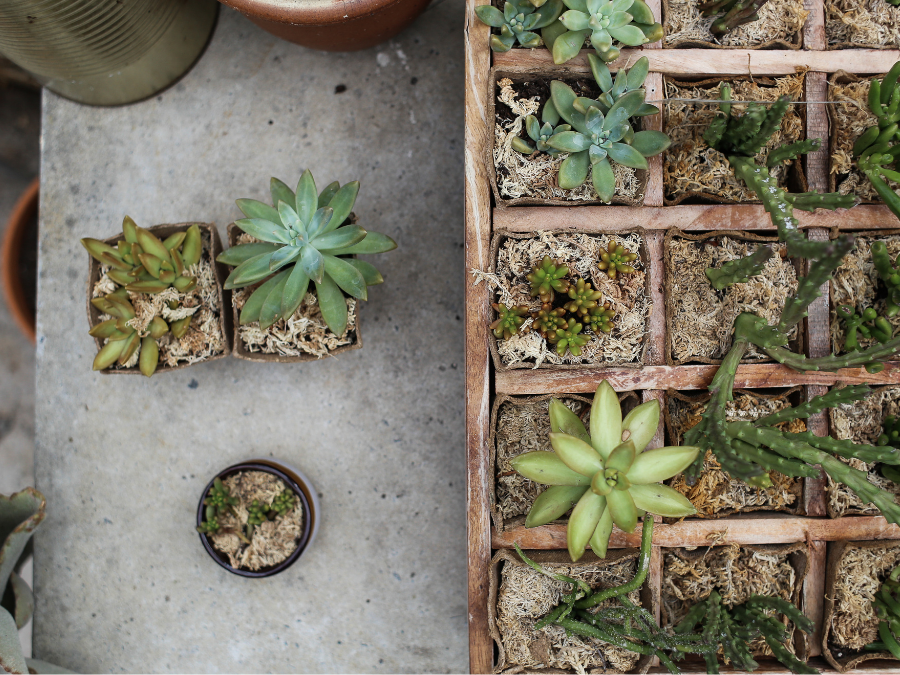
It’s worth mentioning that plant varieties will have individual needs that may differ from your everyday vegetable crops.
Succulents are another popular choice amongst gardeners. While succulents are typically low maintenance, they do naturally grow in arid habitats. Therefore, their soil needs to reflect that.
Using soil formulated specifically for succulents and cacti, such as Pro-Mix Premium Cactus Mix, is important as they are prone to drowning from overwatering. The soil differs slightly from potting soil as it contains more perlites and sand to help with quick drainage. Additionally, it is recommended to put a layer of gravel at the bottom of the plant container before the soil to encourage further drainage.
Most vegetable gardens require the same preparation and upkeep, making them great options for beginner gardeners. Specialized plants such as fruiting bushes, flowers, and trees will require further upkeep and maintenance. This additional work is necessary to balance nutrients and acidity for the most favourable growing conditions. It is common for these plants to suffer from diseases, pests, and poor-quality production.
Hydroponics
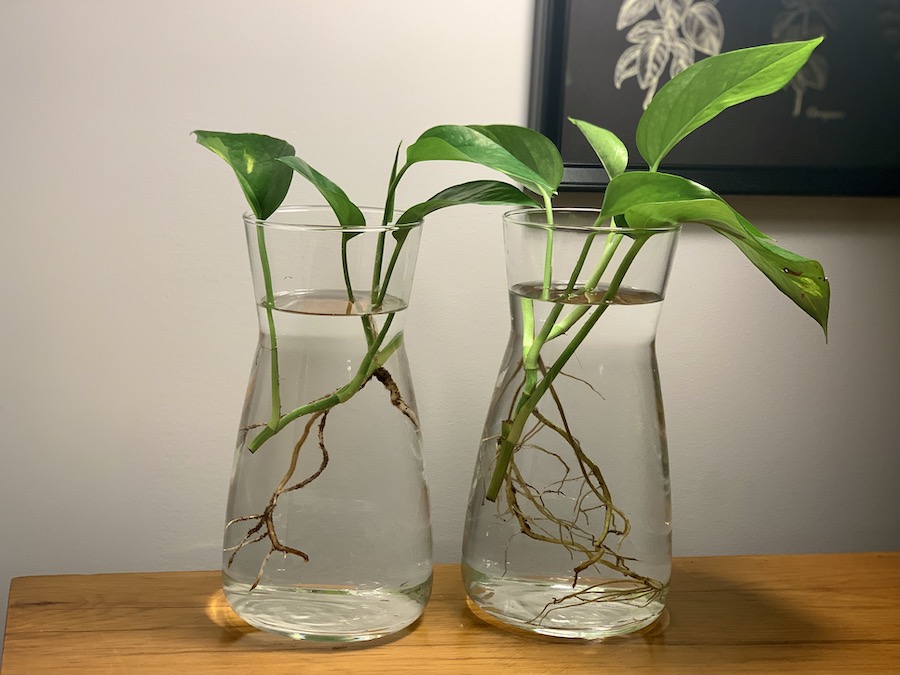
Limited outdoor space? Consider trying out one of the newer trends in gardening, hydroponics. This is essentially the cultivation of plants without soil.
While not all plants are successful with this method, some can be raised from germination to flowering to fruiting without touching soil. The key is to use nutrient-dense water with the proper acidity needed for plant growth. It’s actually much easier than it sounds and is a great way to cultivate plants in urban areas. If you are interested in this method, try starting with lettuce, strawberries, and chives.
Or, if you are looking for an easy, leave-it-and-let-it-grow style garden, consider a hydroponic system such as AeroGarden. These are perfect for having an in-home garden all year round. They work by using LED lights and water to grow herbs, tomatoes, leafy greens and more.
Final Thoughts
Ensuring that your garden receives proper element balance and nutrients is essential to its success. The soil you choose will depict how much added work is needed to create optimal growing conditions. Unless you are willing to put in the effort to fertilize, test and maintain your potting soil frequently, it is best to use garden soil for vegetable gardens.
With that, sit back and let Mother Nature tend to her flora. Before you know it, you’ll have a bountiful harvest throughout the summer (and enjoy the fruits of your labour).

